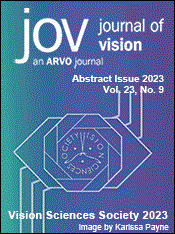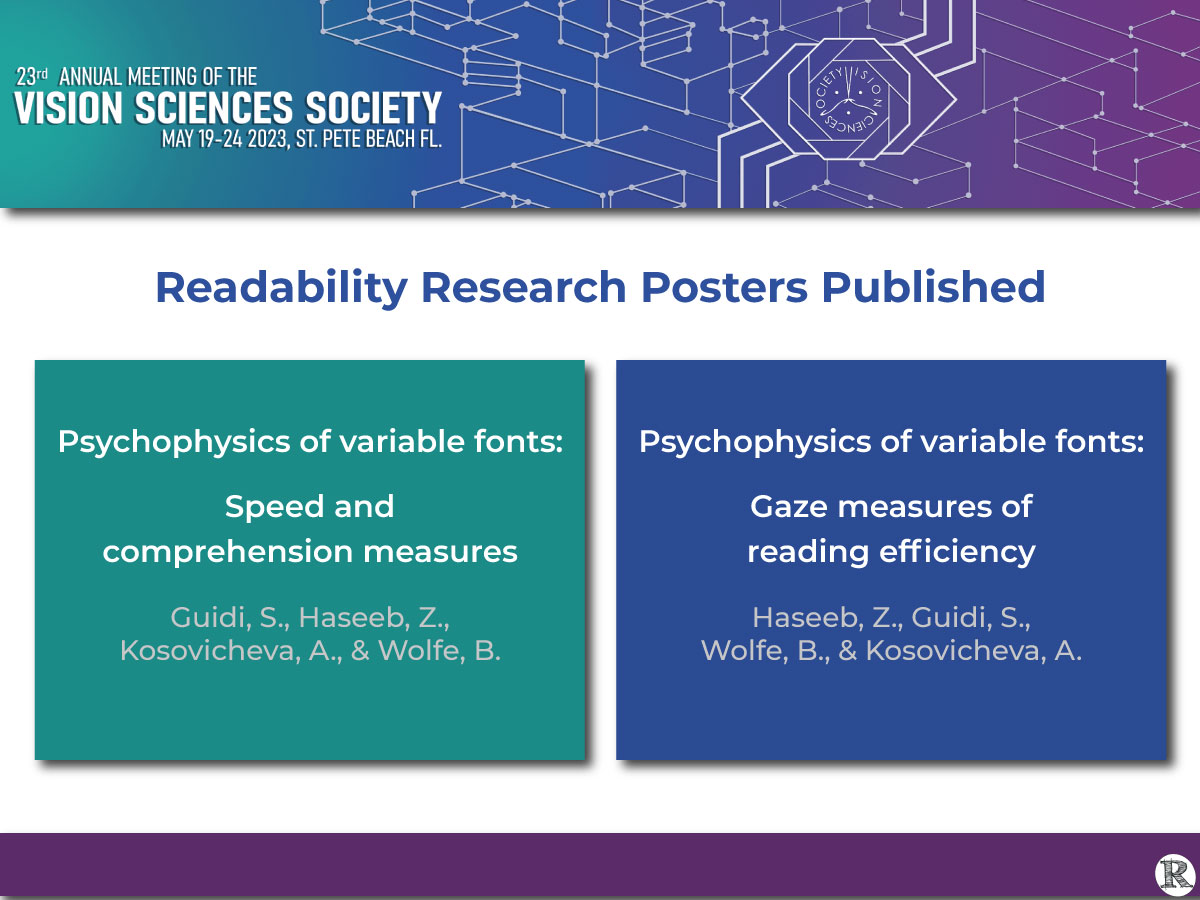Readability Research From
The Applied Perception and Psychophysics Laboratory
University of Toronto Mississauga
The Applied Perception and Psychophysics Laboratory at the University of Toronto Mississauga focuses on questions at the intersection of vision science and real-world problems and takes a use-inspired approach to research. This approach means that the lab looks to real-world problems for what they can tell us about vision, and seeks to both increase our understanding of perceptual mechanisms while addressing timely problems in the world.
Researchers from the Lab undertook studies to investigate the relationships between typographical changes and changes in reading performance. They presented posters outlining their results at the Vision Sciences Society conference in May.
The findings reported are important for creating better reading experiences:
- “There was stability in the results”; the participants scored best with the same text adjustments in repeated evaluations.
- “There was considerable individual variability in the degree to which the changes in [text format] impacted individuals’ reading efficiency”; personalization of text format can improve reading proficiency.
- “The customizability of variable fonts and the sensitivity of our gaze measures may make it possible to quickly find the settings that are best for each reader”; we have the font technology to easily make changes, and the eye tracking tools to evaluate the results for an individual.
See the full abstracts below for more information on this important work.
 Psychophysics of variable fonts: Speed and comprehension measures
Psychophysics of variable fonts: Speed and comprehension measures
Abstract
While many previous studies have investigated how text appearance affects reading performance, variable fonts allow different parameters, like slant and character weight, to be customized along a set of continuous axes. This gives us the unique ability to use psychophysical techniques with them in a new way, and assess how these manipulations impact reading speed and comprehension. To test this, we had participants read passages where the appearance of text had been customized, with each complete passage consisting of four screens of customized text. We measured the speed with which they completed this reading task, and assessed comprehension with multiple-choice probe questions after they had read each passage. We varied five parameters with the Roboto Flex font: slant, width, weight, thick stroke, and thin stroke, with five different levels per parameter, spanning their full range. We show that slant produced the largest changes in reading speed, with words per minute (WPM) increasing as slant decreased, with a 38.4% change over the range of slants tested. In contrast, thick stroke produced the smallest change in reading speed (22.7% of maximum), with WPM increasing as thick stroke width decreased. Thin stroke produced the fastest reading speeds at both extremes, with WMP being highest when thin stroke was set to its minimum. Critically, comprehension was not affected by these manipulations, and was stable for all participants in all conditions (mean comprehension accuracy, 81.5%). Our results suggest that the customizability of variable fonts has significant potential to increase reading speed without impeding comprehension, and the nature of variable fonts lends itself to new psychophysical investigation of the impact of font appearance in reading.
(2023) Guidi, S., Haseeb, Z., Kosovicheva, A., & Wolfe, B. Psychophysics of variable fonts: Speed and comprehension measures. Poster presentation, Vision Sciences Society 2023 doi:https://doi.org/10.1167/jov.23.9.5504
Psychophysics of variable fonts: Gaze measures of reading efficiency
Abstract
Reading is a demanding task, and while many studies have investigated the visual factors associated with reading, the recent development of variable fonts opens new avenues for this research. Variable fonts can be customized along a set of continuous parametric axes within a single font file (e.g., thin stroke, slant, etc.), lending themselves readily to psychophysical techniques. To understand how these settings can influence individual reading performance and which settings may improve reading efficiency, we recorded participants’ eye movements as they read short passages. For this study, we varied five font parameters within Roboto Flex: thick stroke, thin stroke, slant, weight, and width at five levels each. Participants read one passage per setting, displayed across four screens, and we measured saccade amplitude normalized to letter width as well as the number and duration of fixations. Our results demonstrate that increasing width and weight decrease reading efficiency since saccade amplitude decreased as letters became wider and visually heavier. Increasing thick stroke had the largest effect on reading efficiency, while thin stroke and slant had the smallest. We also found considerable individual variability in the degree to which these axes impacted individuals’ reading efficiency and the number of fixations they made. Our results suggest that the customizability of variable fonts and the sensitivity of our gaze measures may make it possible to quickly find the settings that are best for each reader and enable a new range of psychophysical investigations of the impact of font on reading.
(2023) Haseeb, Z., Guidi, S., Wolfe, B., & Kosovicheva, A. Psychophysics of variable fonts: Gaze measures of reading efficiency. Poster presentation, Vision Sciences Society 2023 doi:https://doi.org/10.1167/jov.23.9.5505






